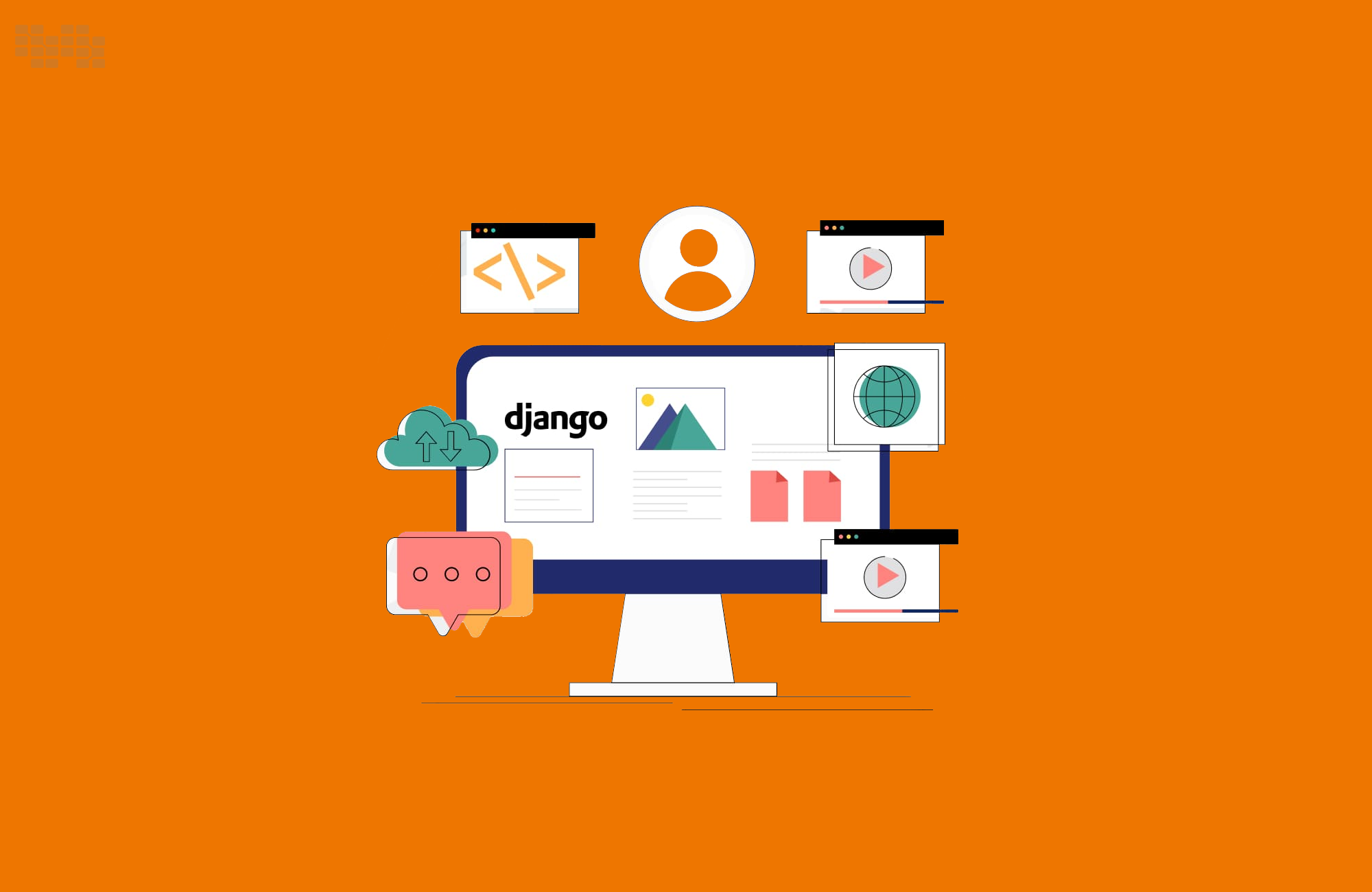Django Request Life Cycle Explained
 Nile Bits
Nile Bits
In the world of web development, understanding the request life cycle is crucial for optimizing performance, debugging issues, and building robust applications. In Django, a popular Python web framework, the request life cycle is a well-defined sequence of steps that a request goes through from the moment it is received by the server until a response is sent back to the client.
An extensive examination of the Django request life cycle is given in this blog article. We will walk you through each stage of the procedure, provide you code samples, and provide you with tips and advice on how to tweak and improve the performance of your Django apps. You will have a thorough knowledge of Django's request and response handling by the conclusion of this post.
1. Introduction to the Django Request Life Cycle
Before diving into the specifics of the request life cycle, it’s essential to understand what a request is in the context of web development. A request is an HTTP message sent by a client (usually a web browser) to a server, asking for a specific resource or action. The server processes the request and sends back an HTTP response, which could be a web page, an image, or data in JSON format.
Django, being a high-level Python web framework, abstracts much of the complexity of handling HTTP requests and responses. However, understanding the underlying mechanics of how Django handles these requests is invaluable for developers who want to leverage the full power of the framework.
2. The Anatomy of a Django Request
At its core, a Django request is an instance of the HttpRequest class. When a request is received by the server, Django creates an HttpRequest object that contains metadata about the request, such as:
Method: The HTTP method used (GET, POST, PUT, DELETE, etc.).
Path: The URL path of the request.
Headers: A dictionary containing HTTP headers, such as
User-Agent,Host, etc.Body: The body of the request, which may contain form data, JSON payload, etc.
Here's a simple example of accessing some of these properties in a Django view:
from django.http import HttpResponse
def example_view(request):
method = request.method
path = request.path
user_agent = request.headers.get('User-Agent', '')
response_content = f"Method: {method}, Path: {path}, User-Agent: {user_agent}"
return HttpResponse(response_content)
In this example, example_view is a basic Django view that extracts the HTTP method, path, and user agent from the request and returns them in the response.
3. Step-by-Step Breakdown of the Django Request Life Cycle
Let's explore each step of the Django request life cycle in detail:
Step 1: URL Routing
When a request arrives at the Django server, the first step is URL routing. Django uses a URL dispatcher to match the incoming request's path against a list of predefined URL patterns defined in the urls.py file.
# urls.py
from django.urls import path
from .views import example_view
urlpatterns = [
path('example/', example_view, name='example'),
]
In this example, any request with the path /example/ will be routed to the example_view function.
If Django finds a matching URL pattern, it calls the associated view function. If no match is found, Django returns a 404 Not Found response.
Step 2: Middleware Processing
Before the view is executed, Django processes the request through a series of middleware. Middleware are hooks that allow developers to process requests and responses globally. They can be used for various purposes, such as authentication, logging, or modifying the request/response.
Here’s an example of a custom middleware that logs the request method and path:
# middleware.py
class LogRequestMiddleware:
def __init__(self, get_response):
self.get_response = get_response
def __call__(self, request):
# Process the request
print(f"Request Method: {request.method}, Path: {request.path}")
response = self.get_response(request)
# Process the response
return response
To use this middleware, add it to the MIDDLEWARE list in the settings.py file:
# settings.py
MIDDLEWARE = [
'django.middleware.security.SecurityMiddleware',
'django.contrib.sessions.middleware.SessionMiddleware',
# Add your custom middleware here
'myapp.middleware.LogRequestMiddleware',
'django.middleware.common.CommonMiddleware',
'django.middleware.csrf.CsrfViewMiddleware',
'django.contrib.auth.middleware.AuthenticationMiddleware',
'django.contrib.messages.middleware.MessageMiddleware',
'django.middleware.clickjacking.XFrameOptionsMiddleware',
]
Middleware is processed in the order they are listed in the MIDDLEWARE list. The request passes through each middleware in the list until it reaches the view.
Step 3: View Execution
Once the request has passed through all the middleware, Django calls the view associated with the matched URL pattern. The view is where the core logic of the application resides. It is responsible for processing the request, interacting with models and databases, and returning a response.
Here’s an example of a Django view that interacts with a database:
# views.py
from django.shortcuts import render
from .models import Product
def product_list(request):
products = Product.objects.all()
return render(request, 'product_list.html', {'products': products})
In this example, the product_list view queries the Product model to retrieve all products from the database and passes them to the product_list.html template for rendering.
Step 4: Template Rendering
If the view returns an HttpResponse object directly, Django skips the template rendering step. However, if the view returns a dictionary of context data, Django uses a template engine to render an HTML response.
Here’s an example of a simple Django template:
<!-- templates/product_list.html -->
<!DOCTYPE html>
<html>
<head>
<title>Product List</title>
</head>
<body>
<h1>Products</h1>
<ul>
{% for product in products %}
<li>{{ product.name }} - ${{ product.price }}</li>
{% endfor %}
</ul>
</body>
</html>
In this example, the product_list.html template loops through the products context variable and renders each product's name and price in an unordered list.
Step 5: Response Generation
After the view has processed the request and rendered the template (if applicable), Django generates an HttpResponse object. This object contains the HTTP status code, headers, and content of the response.
Here's an example of manually creating an HttpResponse object:
from django.http import HttpResponse
def custom_response_view(request):
response = HttpResponse("Hello, Django!")
response.status_code = 200
response['Content-Type'] = 'text/plain'
return response
In this example, the custom_response_view function returns a plain text response with a status code of 200 (OK).
Step 6: Middleware Response Processing
Before the response is sent back to the client, it passes through the middleware again. This time, Django processes the response through any middleware that has a process_response method.
This is useful for tasks such as setting cookies, compressing content, or adding custom headers. Here’s an example of a middleware that adds a custom header to the response:
# middleware.py
class CustomHeaderMiddleware:
def __init__(self, get_response):
self.get_response = get_response
def __call__(self, request):
response = self.get_response(request)
response['X-Custom-Header'] = 'MyCustomHeaderValue'
return response
Step 7: Sending the Response
Finally, after all middleware processing is complete, Django sends the HttpResponse object back to the client. The client receives the response and renders the content (if it’s a web page) or processes it further (if it’s an API response).
4. Advanced Topics in Django Request Handling
Now that we’ve covered the basics of the Django request life cycle, let's explore some advanced topics:
4.1 Custom Middleware
Creating custom middleware allows you to hook into the request/response life cycle and add custom functionality globally. Here’s an example of a middleware that checks for a custom header and rejects requests that do not include it:
# middleware.py
from django.http import HttpResponseForbidden
class RequireCustomHeaderMiddleware:
def __init__(self, get_response):
self.get_response = get_response
def __call__(self, request):
if 'X-Required-Header' not in request.headers:
return HttpResponseForbidden("Forbidden: Missing required header")
response = self.get_response(request)
return response
4.2 Request and Response Objects
Django's HttpRequest and HttpResponse objects are highly customizable. You can subclass these objects to add custom behavior. Here’s an example of a custom request class that adds a method for checking if the request is coming from a mobile device:
# custom_request.py
from django.http import HttpRequest
class CustomHttpRequest(HttpRequest):
def is_mobile(self):
user_agent = self.headers.get('User-Agent', '').lower()
return 'mobile' in user_agent
To use this custom request class, you need to set it in the settings.py file:
# settings.py
MIDDLEWARE = [
'django.middleware.security.SecurityMiddleware',
'django.contrib.sessions.middleware.SessionMiddleware',
'django.middleware.common.Common
Middleware',
# Use your custom request class
'myapp.custom_request.CustomHttpRequest',
'django.middleware.csrf.CsrfViewMiddleware',
'django.contrib.auth.middleware.AuthenticationMiddleware',
'django.contrib.messages.middleware.MessageMiddleware',
'django.middleware.clickjacking.XFrameOptionsMiddleware',
]
4.3 Optimizing the Request Life Cycle
Optimizing the request life cycle can significantly improve your Django application's performance. Here are some tips:
- Use Caching: Caching can drastically reduce the load on your server by storing frequently accessed data in memory. Django provides a robust caching framework that supports multiple backends, such as Memcached and Redis.
# views.py
from django.views.decorators.cache import cache_page
@cache_page(60 * 15) # Cache the view for 15 minutes
def my_view(request):
# View logic here
return HttpResponse("Hello, Django!")
- Minimize Database Queries: Use Django’s
select_relatedandprefetch_relatedmethods to minimize the number of database queries.
# views.py
from django.shortcuts import render
from .models import Author
def author_list(request):
# Use select_related to reduce database queries
authors = Author.objects.select_related('profile').all()
return render(request, 'author_list.html', {'authors': authors})
Leverage Middleware for Global Changes: Instead of modifying each view individually, use middleware to make global changes. This can include setting security headers, handling exceptions, or modifying the request/response.
Asynchronous Views: Starting with Django 3.1, you can write asynchronous views to handle requests asynchronously. This can improve performance for I/O-bound tasks such as making external API calls or processing large files.
# views.py
from django.http import JsonResponse
import asyncio
async def async_view(request):
await asyncio.sleep(1) # Simulate a long-running task
return JsonResponse({'message': 'Hello, Django!'})
5. Conclusion
Understanding the Django request life cycle is fundamental for any Django developer. By knowing how requests are processed, you can write more efficient, maintainable, and scalable applications. This guide has walked you through each step of the request life cycle, from URL routing to sending the response, and provided code examples and tips for optimizing your Django applications.
By leveraging the power of Django’s middleware, request and response objects, and caching framework, you can build robust web applications that perform well under load and provide a great user experience.
References
Django Documentation: https://docs.djangoproject.com/en/stable/
Django Middleware: https://docs.djangoproject.com/en/stable/topics/http/middleware/
Django Views: https://docs.djangoproject.com/en/stable/topics/http/views/
Django Templates: https://docs.djangoproject.com/en/stable/topics/templates/
Django Caching: https://docs.djangoproject.com/en/stable/topics/cache/
Subscribe to my newsletter
Read articles from Nile Bits directly inside your inbox. Subscribe to the newsletter, and don't miss out.
Written by

Nile Bits
Nile Bits
Nile Bits is a software company, focusing on outsourcing software development and custom software solutions. Our outsourcing software services and solutions are designed with a focus on secure, scalable, expandable and reliable business systems. Via our low cost, high quality and reliable outsourcing software services, we provide to our clients value for money and therefore client satisfaction.